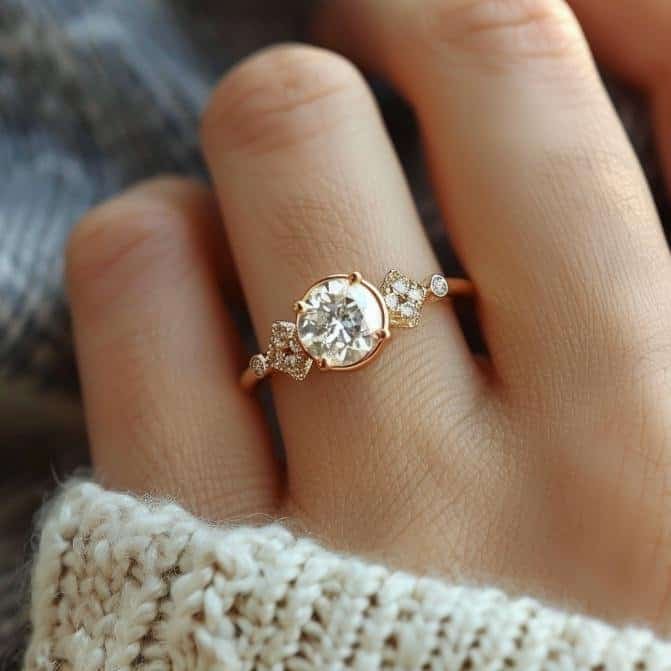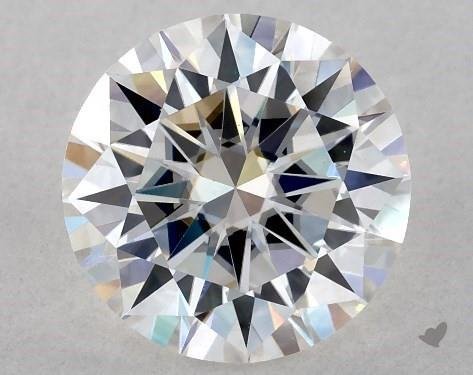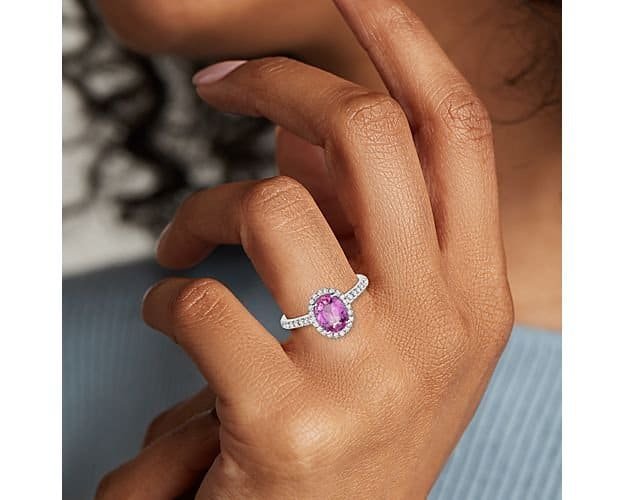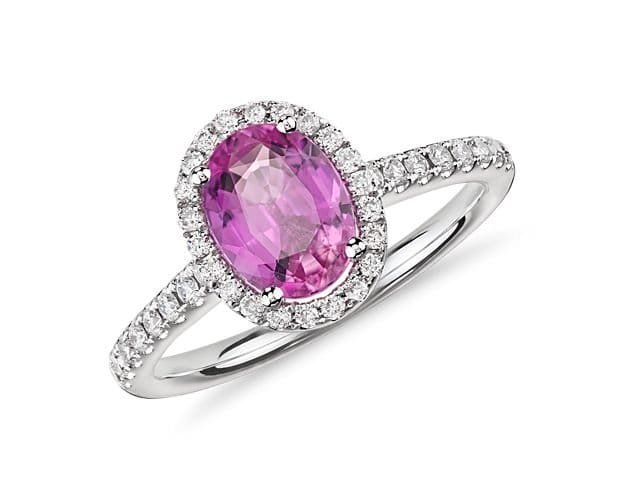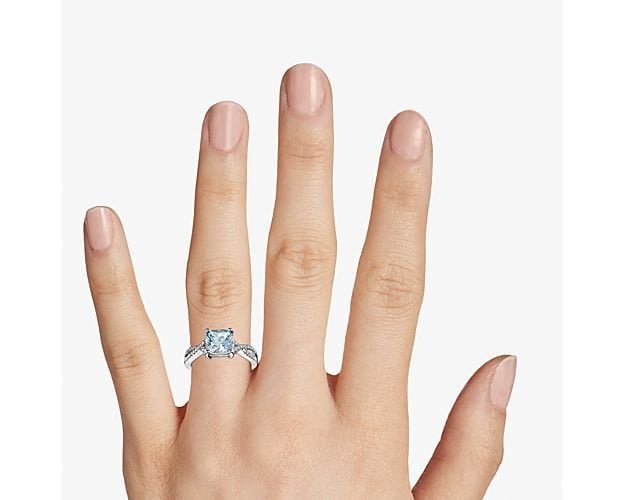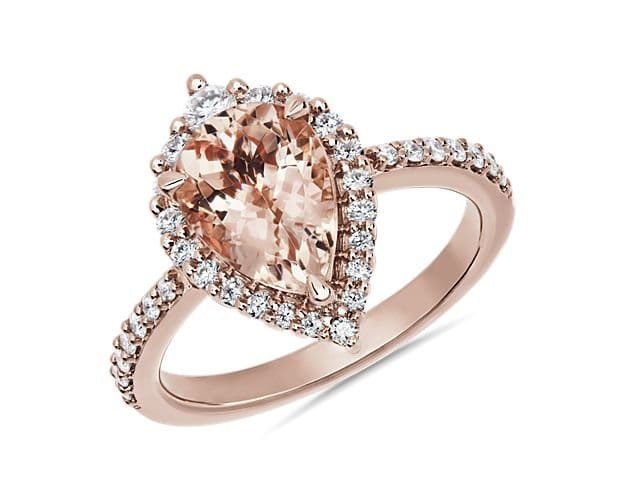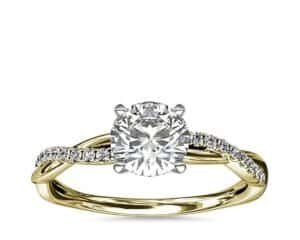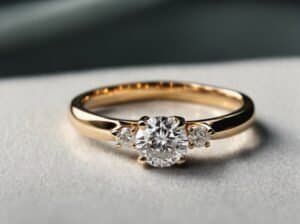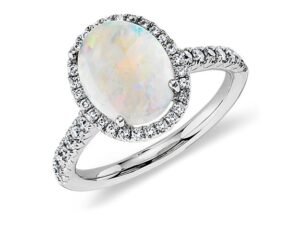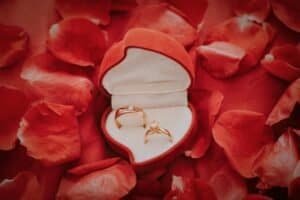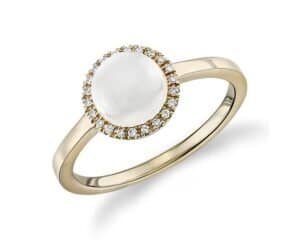Non Diamond Engagement Rings – Table of Contents
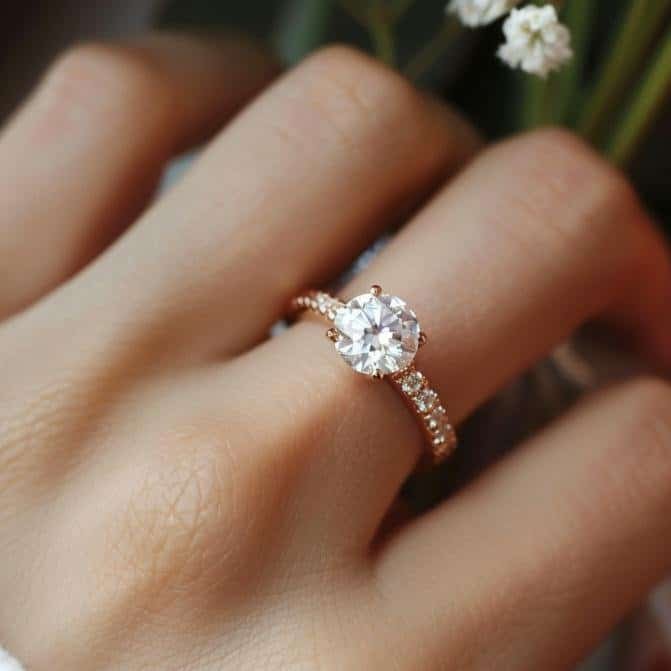
Redefining Traditions: The Rise of Non Diamond Engagement Rings and Their Advantages
Hey there! Let’s dive into a story that might just change how you view the whole engagement ring tradition. Imagine this: you’re standing in front of a dazzling array of rings, each sparkling under the showroom lights.
Now, I know what you’re thinking – these must be diamonds, right? Well, what if I told you that some of the most captivating rings in the collection weren’t diamonds at all? Yep, you heard me right!
You see, while diamonds have been the go-to for engagement rings for what seems like forever, there’s a fresh wave of change rolling in. More and more couples are choosing non-diamond engagement rings.
Why, you ask? Well, it’s not just about breaking from tradition; it’s also about embracing a world of choices that are not only stunning but can be far more kind to your wallet.
Now, before you think this is just another trend, let me walk you through why this shift is catching on like wildfire. Non-diamond engagement rings bring something new to the table – they’re unique, they tell a story, and yes, they can significantly ease the pressure on your bank account.
But don’t worry, opting for a non-diamond doesn’t mean compromising on that sparkle or sentimentality we all love.
Think about it for a second. How incredible would it be to choose a ring that’s not only beautiful but also reflects your personal style and values? And what if I told you that by choosing a non-diamond ring, you’re joining a growing community of trendsetters and tradition-shakers?
So, whether you’re all about that eco-friendly life, hunting for something that stands out from the crowd, or just curious about what’s out there beyond the world of diamonds, stick around.
We’re about to embark on a sparkling journey into the realm of non diamond engagement rings. And who knows? You might just find that these alternatives resonate with you more than any diamond ever could.

The True Cost of Diamond Rings: A Glittering Investment
Ever pause to wonder why diamond engagement rings often come with such a hefty price tag? Let’s break down this sparkling enigma together.
Imagine, for a moment, you’re faced with a stunning array of diamond rings, each shimmering under the store’s lights. It’s easy to get lost in their beauty, but the reality of their prices can quickly snap you back to earth.
On average, a diamond engagement ring can set you back anywhere from $3,000 to a whopping $10,000! Yes, you read that right. But what makes these shiny stones command such prices? Enter the famous four Cs: cut, colour, clarity, and carat.
These are the metrics by which diamonds are judged and valued. A high-grade cut that maximizes the stone’s sparkle, a colour that ranges closer to pure white, clarity indicating fewer blemishes, and a larger carat weight all contribute to a higher price tag.
But here’s where it gets interesting: let’s compare this with non diamond engagement rings. High-quality moissanite, a popular diamond alternative, can cost as little as $300 to $600 for a stone that visually competes with a diamond nearly ten times its price.
Other options like sapphires, rubies, or even lab-grown gems offer their own unique beauty and significantly lower prices, often ranging from $500 to $2,000, depending on the type and quality of the stone and setting.
So why stick with tradition when you can opt for a non-diamond engagement ring that not only stands out but also offers a more budget-friendly option?
Moving away from diamonds can mean more savings for your future together, whether that’s a dream honeymoon, a down payment on a home, or simply a financial cushion.
Curious about more detailed cost breakdowns? Dive into our comprehensive comparison guide here [insert a link to your detailed guide], where we lay out everything you need to know to make an informed decision that’s right for you and your budget.
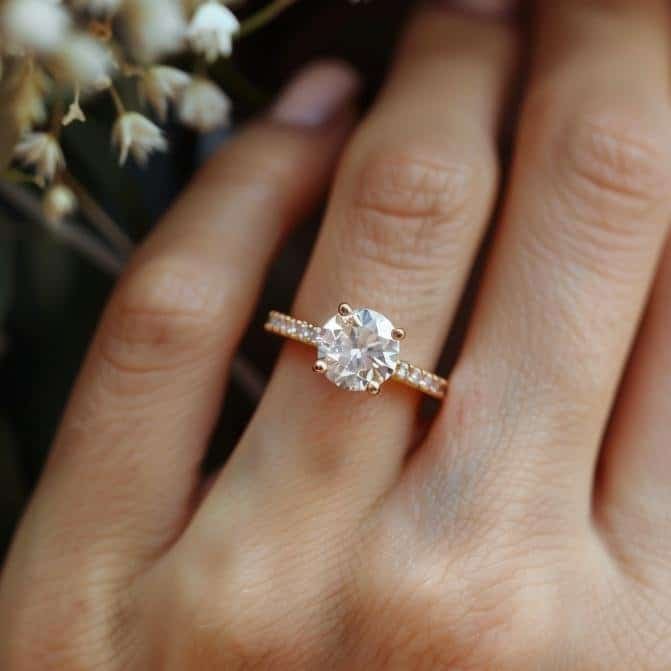
Understanding Non Diamond Engagement Rings: Diverse and Dazzling Alternatives
If you’re contemplating stepping away from the traditional diamond path, you’re in for a delightful journey. Non diamond engagement rings are not just a budget-friendly choice; they’re a reflection of personal style, unique love stories, and, sometimes, ethical and environmental considerations. Let’s get acquainted with some charming contenders.
Moissanite: A gem that’s nearly as tough as a diamond, moissanite is a stellar alternative, boasting incredible brilliance and fire. Originally discovered in a meteor crater, this gem is nearly as hard as its diamond counterpart, scoring a 9.25 on the Mohs scale of hardness, meaning it’s very suitable for daily wear.
Moissanite shines with a rainbow-like sparkle that exceeds even that of diamonds, making it a standout choice for those who love a little extra dazzle.
Sapphire: Steeped in royal tradition yet refreshingly modern, sapphires are a symbol of wisdom and purity. Not limited to the classic deep blue, they come in a rainbow of colours from peachy pinks to yellow hues.
Ranking 9 on the Mohs scale, sapphires are second only to diamonds in durability, making them a perfect pick for an engagement ring meant to last a lifetime.
Ruby: Known as the stone of passion and love, rubies radiate with intense, deep red hues. They are almost as durable as sapphires, and they are also rated 9 on the Mohs scale. A ruby engagement ring is a bold choice that stands out from the crowd, symbolizing fierce and undying love.
Emerald: Emeralds are revered for their lush, green shades that call to mind renewal and growth. However, with a Mohs hardness rating between 7.5 to 8, they are a bit softer than their counterparts.
This means they require a bit more care, but for many, the trade-off is worth it for that unique, verdant glow.
By considering non-diamond engagement rings, you’re not just making a choice for your wallet; you’re embracing diversity and expressing your unique style.
Whether you lean towards the fiery sparkle of moissanite, the cool elegance of sapphire, the passionate allure of ruby, or the vibrant life-affirming green of emerald, there’s a world of options waiting for you.

Cost Comparison: Diamonds vs. Non-Diamond Alternatives – What’s the Real Difference?
Choosing between a diamond and a non-diamond engagement ring isn’t just about style; it’s also a significant financial decision. Let’s break down the cost differences to help you make an informed choice.
Diamond Rings: Traditionally, a decent quality diamond ring can start anywhere from $3,000 and can skyrocket to well over $10,000, depending on factors like the four Cs (cut, colour, clarity, and carat). For example, a 1-carat diamond with a good cut, colour, and clarity averages around $5,000 to $6,000 at major retailers like Blue Nile or James Allen.
Moissanite Rings: A stunning alternative, moissanite shines brightly in the cost department. A similar-sized 1-carat moissanite can cost around $600 to $800, a fraction of the diamond’s price, without compromising the visual impact.
Sapphire Rings: If you’re drawn to colour, a sapphire ring is a beautiful choice. A high-quality 1-carat sapphire ring might range from $1,000 to $4,000, influenced by the gem’s colour, clarity, and origin. For instance, a vibrant blue sapphire from a reputable retailer like Angara can be found within this price range.
Ruby Rings: Rubies, known for their deep red colour, can vary significantly in price due to their rarity and quality. You might find a 1-carat ruby ring priced between $1,000 and $5,000. Remember, the deeper the red, the higher the price.
Emerald Rings: Green with envy? An emerald engagement ring is a classic choice. Prices for a high-quality 1-carat emerald can range between $500 and $4,000, significantly influenced by the stone’s brightness and clarity.
Now, let’s talk metal. The choice of metal – be it gold, silver, or platinum – can also sway the price of your ring. Gold, whether yellow, white, or rose, typically ranges between $300 and $900 for the band alone, depending on the karat and weight.
Silver is a more budget-friendly option, often costing less than $100 for the band. Platinum, on the other hand, is the most luxurious choice, with band prices starting around $600 and going up to $2,000 due to its rarity and density. While diamond rings are undeniably beautiful, they also come with a steeper price tag.
Non-diamond alternatives, such as moissanite, sapphire, ruby, and emerald, offer a wide range of prices that cater to every budget, allowing you to prioritize other financial goals without sacrificing beauty or quality. Remember, the right choice is the one that aligns with your personal style, values, and financial situation.

How Couples Can Save Money with Non Diamond Engagement Rings: Smart Spending for Your Big Day
Who says a beautiful engagement ring has to empty your savings? Opting for a non-diamond ring not only reflects your unique style but also keeps your finances smiling. Let’s dive into some practical tips on how you can make a wise, cost-effective decision without sacrificing the sparkle.
Embrace Alternative Gemstones: As we explored earlier, gems like moissanite, sapphire, ruby, or emerald are not only gorgeous but also significantly more affordable than diamonds. By choosing these alternatives, you could save thousands of dollars. Imagine what you could do with that extra cash!
Consider Vintage or Heirloom Rings: There’s something incredibly romantic about a ring with a story. Plus, vintage rings or family heirlooms often cost less than new ones and can be unique conversation starters. Embracing history could lead to significant savings and add a layer of personal significance to your engagement.
Customize Within Reason: Customizing a ring doesn’t have to mean going overboard with expenses. Work with a jeweller to design a non-diamond ring that fits your budget. Often, simple designs with alternative stones can look stunning and timeless, all while keeping costs down.
Shop Around and Compare Prices: Don’t rush your purchase. Take the time to shop around, compare prices, and find the best deals. Online retailers often offer competitive prices compared to brick-and-mortar stores due to lower overhead costs.
Time Your Purchase: Keep an eye out for sales and promotions. Many jewellers offer discounts during off-peak times or around holidays. Planning your purchase can lead to additional savings.
Now, think about the possibilities with the money you save. Perhaps it could go towards a dream honeymoon, a down payment on your first home, or an extravagant wedding feature you thought was out of reach.
Your engagement ring is just the beginning of your journey together; why not start it on a positive and prudent financial foot?
We’d love to hear from you! Have you opted for a non diamond engagement ring, or are you considering one? How have you used or do you plan to use the savings from your smart ring choice?
Share your stories and tips in the comments below. Let’s inspire each other with savvy, heartfelt choices as we celebrate love in all its forms!

The Additional Benefits of Choosing Non Diamond Engagement Rings: More Than Just Savings
While the cost-saving aspect of non-diamond engagement rings is certainly appealing, there are many other benefits that make these alternatives shine. Let’s explore the additional advantages that might just sway your heart and mind:
Uniqueness and Personalization:
- Non-diamond rings stand out from the crowd with their unique charm and character.
- They offer a broad canvas for personalization, allowing you to choose a stone, setting, and design that truly reflects your personal story and style.
Ethical and Environmental Considerations:
- Many non-diamond alternatives have a smaller environmental footprint, appealing to eco-conscious individuals.
- Opting for lab-grown stones or ethically sourced gems can ensure that your beautiful symbol of love also aligns with your values.
Historical and Cultural Significance:
- Gemstones like sapphires, rubies, and emeralds carry rich histories and meanings, adding depth and significance to your ring.
- Choosing a stone with cultural or historical relevance can add a layer of storytelling and heritage to your engagement.
Durability and Longevity:
- While diamonds are famed for their hardness, many non-diamond alternatives like sapphires and moissanites also offer excellent durability for everyday wear.
- Opting for one of these alternatives doesn’t mean compromising on the longevity of your ring.
Variety of Choices:
- The world of non-diamond rings is vast and varied, offering an array of colours, cuts, and styles.
- This variety ensures that you can find something that fits both your aesthetic preferences and lifestyle needs.
Symbolism and Meaning:
- Different gemstones carry different meanings—choosing a stone that symbolizes a particular sentiment can add a profound personal touch to your engagement ring.
- For instance, rubies symbolize passion and energy, while emeralds represent renewal and growth.
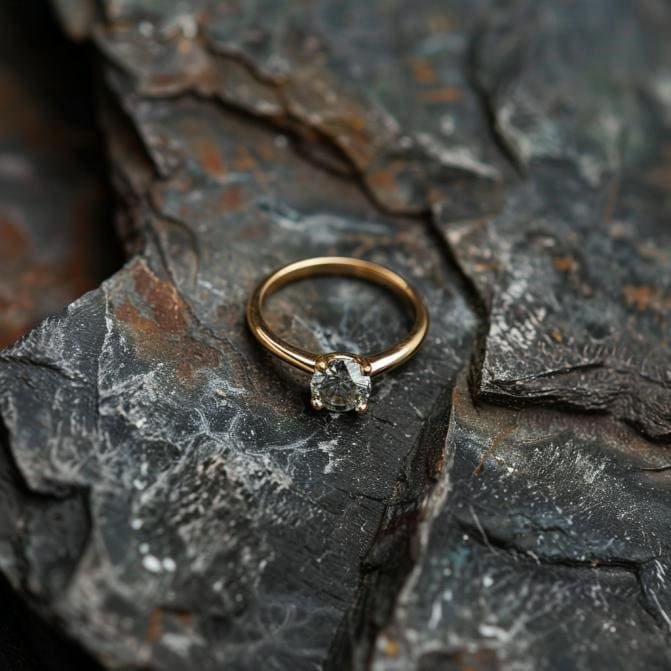
Making Your Decision: Factors to Consider When Choosing the Perfect Engagement Ring
The journey to finding the perfect engagement ring is exciting, yet it can feel overwhelming with so many options out there. Here’s some friendly advice to guide you through making a decision that feels right for both your heart and your wallet:
Budget: First and foremost, determine a budget that works for you. Remember, the cost of the ring doesn’t measure the love you share. Be honest about what you can afford and stick to it, ensuring you start this new chapter without financial stress.
Style: Consider the personal style of the ring wearer. Are they traditional or modern? Do they prefer bold colours or subtle elegance? The ring should reflect the wearer’s personality, as it’s something they’ll be wearing every day.
Personal Values: Think about what matters most to you and your partner. If ethical sourcing, environmental impact, or supporting local businesses is important, let those values guide your choice.
Research: Spend some time researching different types of rings, materials, and gemstones. Understanding the pros and cons of each can help you make a more informed decision.
Shop Around: Don’t rush into a purchase. Visit multiple jewellers, compare prices, and ask questions. Shopping online can also offer more variety and better deals, but make sure to purchase from reputable retailers.
Longevity: Consider the durability of the material and the lifestyle of the wearer. Some gemstones and metals withstand daily wear better than others.
Customization: Remember that customizing a ring can make it even more special and unique. However, ensure that any customizations stay within your budget and meet your expectations.
Second Opinions: Sometimes, a second set of eyes can be incredibly valuable. Don’t hesitate to bring a friend or family member along or share your options with someone you trust.
Return Policy and Warranty: Finally, check the return policy and warranty before making a purchase. It’s important to have peace of mind knowing that you can address any issues that may arise.
Our Unique Perspective: Embracing Authenticity in Your Choice
We’re all about honesty here, so let’s talk heart-to-heart. There’s no denying the allure of a traditional diamond – its timeless elegance, its renowned durability, and, yes, its status symbol.
In many ways, nothing quite beats the real thing if that’s what your heart is set on. Diamonds have captivated us for centuries for a reason, and if a classic diamond engagement ring is what you’ve always dreamed of, then it’s worth pursuing that dream.
However, we also stand firmly on the side of personal choice and financial wisdom. The world is brimming with beautiful alternatives that might not only suit your style and values better but also leave your finances in a healthier state.
After all, an engagement ring is a symbol of love, not a measure of it. We believe in the beauty of individuality and the importance of making decisions that resonate with your unique life and love story.
If you find yourself gravitating towards non-diamond alternatives, know that your choice is just as valid, meaningful, and significant.
Whether it’s the ethical sourcing, the unique aesthetic, or simply the cost savings that appeal to you, your decision deserves respect and admiration. After all, love isn’t one-size-fits-all, so why should engagement rings be any different?
At the end of the day, whether it’s a glittering diamond or a radiant sapphire, what matters most is the love it represents.
We encourage you to follow your instincts, honour your personal values, and choose a ring that speaks to your heart. Remember, this is your life, your love, and your special day. Only you know what’s truly right for you and your partner.
We’d love to hear about your journey and the unique choices you’ve made or are considering. Feel free to share your story in the comments below. Let’s celebrate diversity in love and in life, one ring at a time.
FAQs Section: Your Questions Answered
Is it OK to get a non-diamond engagement ring?
What is the best diamond alternative?
What engagement ring is good for girls who don’t like diamonds?
Is it OK to buy a fake diamond engagement ring?
Are non-diamond engagement rings as durable as diamond rings?
Can non-diamond rings be customized?
How much can I expect to save by choosing a non-diamond engagement ring?
Are non-diamond engagement rings considered less traditional or meaningful?
How do I care for a non-diamond engagement ring?
Where is the best place to purchase non-diamond engagement rings?
Wrapping It Up The Sparkling Conclusion on Non-Diamond Engagement Rings
We’ve journeyed through the dazzling world of popular non diamond engagement rings, and what a journey it’s been! From exploring the cost-effective alternatives to diamonds, like moissanite and sapphires, to understanding the unique benefits these gems bring to the table – we’ve covered a lot of ground.
We discussed how opting for a non-diamond ring can lead to significant savings, allowing you to allocate funds towards other elements of your engagement or life together.
But beyond just the financial aspect, we delved into the personal significance, style, and ethical considerations that make non-diamond rings a compelling choice for many couples.
Remember, while diamonds have held the title of the “traditional” choice for generations, the true essence of an engagement ring is what it represents: your unique love story, your commitment, and your personal values.
Non-diamond engagement rings offer a canvas for expression that diamonds simply can’t match – they allow you to tell your story in a way that’s as unique as your love.
As we wrap up, I encourage you to reflect on what matters most to you and your partner. Whether you’re drawn to the timeless elegance of a diamond or the unique charm of a non-traditional gemstone, your choice should resonate with your personal love story.
Thank you for joining me on this exploration of affordable non diamond engagement rings. Whether you’re just beginning your journey or ready to make that all-important choice, remember that the perfect ring is the one that best reflects your individual love and life together.
If you’ve enjoyed this guide or have your own experiences to share, don’t hesitate to drop a comment below. We love hearing from you and learning about your unique journeys and decisions!
From Yes to I Do: Celebrating Your Stories and Sparkles
At Simplistic Jewellery UK, we treasure every love story and the beautiful symbols that represent them. As we launch our new blog, we’re excited to invite you to share the moments and memories that have led you from “Yes” to “I Do,” along with a glimpse of the rings that symbolise your unique bonds.
This is more than just a call to share; it’s an opportunity to join a community that celebrates love in all its sparkling diversity.
Share Your Love Story and Ring
We’re eager to hear your engagement stories and the rings that mark your commitment. Whether it’s a tale filled with surprises, a heartfelt moment, or the creative journey behind choosing or designing your ring, your story has a place here.
- To Share Your Story: Email us at contactus@simplisticjewelleryuk.com with “My Engagement Story” in the subject line. Attach any photos that capture your special moments together.
- To Showcase Your Ring: Send a photo of your engagement ring to the same email address, with “My Engagement Ring” as the subject. Feel free to include details about its design, why you chose it, or what it means to you.
A Token of Our Appreciation
Every story and ring featured will receive a heartfelt thank you from us at Simplistic Jewellery UK. We’re honoured to share in the celebration of your engagement and to offer a small token of our appreciation for adding your story to our collective narrative.
Join us in this celebration of love, commitment, and the journey to “I Do.” Share your story, showcase your ring, and become an integral part of our growing community.
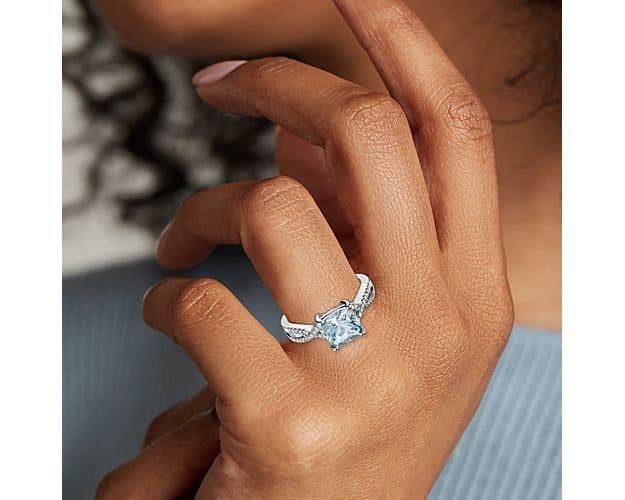
Explore More on Engagement Rings
If you’ve found our article helpful, you may be interested in further exploring the world of engagement rings. Below is a curated list of articles that delve into various styles and aspects of engagement rings. Each link offers unique insights and detailed information that could be just what you’re looking for:
- White Sapphire Engagement Rings: The Essential Top 10 Tips Before You Pick the Perfect One
- Pear Shaped Engagement Ring: Your Guide to Ethical Elegance
- Mens Engagement Rings: Guide To Understanding What Men Want
- Oval Moissanite Engagement Rings vs Diamonds: A Detailed Value Analysis
- Engagement Ring Styles Chart: The Evolution from Past to Present
- Montana Engagement Rings: Discover the Unique Colour Range
- Big Engagement Rings: Understanding Value Beyond the Sparkle
- Eternal Shine: The Ultimate Guide to Maintaining Your Morganite Engagement Ring
- Minimalist Engagement Rings: The Art Of Simplicity
- Aquamarine Engagement Ring: Discover the Healing Power Behind the Gem of the Sea
- Classic Engagement Rings: Crafting the Perfect Symbol of Timeless Love
- History on Your Hand: Selecting the Perfect Vintage Round Engagement Ring
- Rectangle Engagement Rings: Mastering the Art of Jewellery Pairing for Every Occasion
- Cushion Cut Engagement Rings: Unveiling the Science Behind Their Signature Sparkle
- Unique Engagement Rings for Women: The Art of Custom, Handcrafted Romance


